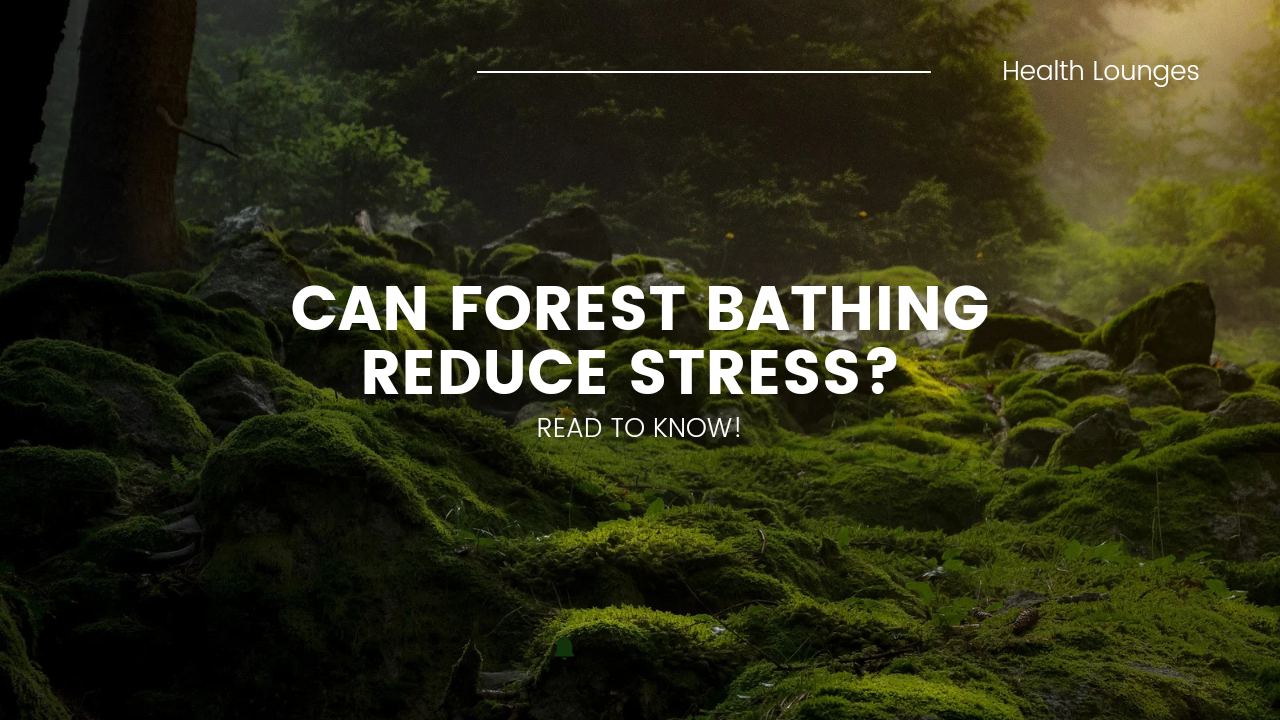Can “forest bathing” reduce stress?

The Science of Forest Bathing
Where would you rather be right now: Sitting inside somewhere reading this, or walking through a lush forest, immersing yourself in the sights, sounds, smells, and textures of a pristine natural environment?
If you’re like us, it’s not even close.

The health benefits of fresh air and scenic vistas seem apparent, especially when the alternative is more time in front of a screen.
But what does science say?
A recent scientific review on the practice of “forest bathing” concluded that regular forest exposure offers genuine psychological benefits based on the available evidence.

Of course, forest bathing is also the subject of plenty of internet chatter, suggesting it’s the answer to all our health problems.
So let’s take a quick look at how forest bathing might help.
Some quick background…
Forest bathing emerged in Japan in the 1980s, called “shinrin-yoku.”
(There’s no literal bathing involved unless you get caught in a sudden downpour.)
Traditionally, forest bathing is more than just a walk in the woods—pleasant and vital as that can be.
According to the researchers: It’s a meditative practice that includes walking at a “non-tiring pace” with stops to do breathing exercises and contemplate nature.
Sessions usually last two to four hours and are supervised by a trained guide, say the scientists.
That doesn’t sound practical for many folks—at least not as a regular activity.
But, like so many health and fitness practices…
Forest bathing isn’t an all-or-nothing proposition.

The study authors say the best evidence for the benefits of forest therapy is for “soft outcomes”—short-term improvements in mood, stress levels, and emotional balance.
The evidence was weakest for benefits related to allergies, metabolic disorders, and cardiovascular and respiratory diseases.
Some studies suggest forest bathing may boost the immune system. Still, the researchers caution that more extensive clinical trials are needed to determine “whether these effects can be meaningful in the long-term prevention of different immune-related diseases.”
The bottom line…
The relaxing effects of forest bathing can temporarily lower stress hormone levels, heart rate, and blood pressure and improve sleep quality.

And based on the scientists’ analysis, the minimal effective dose is 10 to 30 minutes for a single session of sitting or walking in the woods. Longer exposures are linked to more robust and longer-lasting effects.
To get the most out of forest bathing…
1. Engage all five senses.
► Sight: Take time to see the trees and the forest. And the plants. And the rocks. And anything else the landscape offers.
► Sound: Who doesn’t love the sound of rushing water or wind blowing through leaves?
► Smell: Forest air includes chemicals called volatile organic compounds (VOCs), which have antioxidant and anti-anxiety properties. The specific VOCs in the atmosphere varies by season, weather, and the types of trees.
► Touch: The tactile sensations of the outdoors are thought to have a calming effect.
► Taste: Okay, maybe you have to settle for engaging four senses. You don’t want to drink water from a stream without assurance from park rangers or local experts or eat wild berries unless you know what they are. (though recently, I had a chance to drink water from streams up there in Manali, and it was the tastiest water I had ever in life)
2. Leave the phone in your pocket.
Resist the urge to turn your outdoor experience into a photo op.
The benefits of nature go beyond what you see and feel when walking in the woods, and you also benefit from what you aren’t doing.
Every time you take out your phone to capture a waterfall or scenic vista, beautiful as they may be, you’re pulling yourself out of the natural world and into an unnatural one—the very thing you are trying to get away from.
3. Don’t feel pressure to turn it into a workout.
If you’re stressed, the health benefits of an hour in the woods may exceed the benefits of an hour in the gym.
Now, you might wonder…
Doesn’t a nice walk around the neighborhood or a city park offer many of the same benefits? It wouldn’t surprise us, but they may each provide unique perks.
We do know this:
Moving? Good.
Getting outside? Good.
Taking time for yourself? Good.
So do more of that; however you’re able to.
Until next time,
Dt. Mohit Mittal
(BFND, B.TECH, DDHN, NSQF-4, YCB-3, SSY-1, PT- REPS INDIA)
